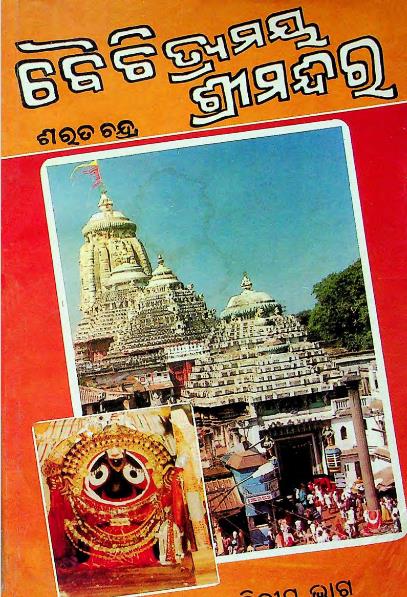In the literary tapestry of Odia culture, Baichitryamay Srimandir, authored by the prolific Sarat Chandra in 1999, stands out as a significant work that illuminates the divine expressions and rich cultural practices surrounding Lord Jagannath and his abode in Puri. This essay book serves as an invaluable resource for interpreting the myriad facets of Odiya heritage, intricately woven with the veneration of Lord Jagannath through rituals, attire, and divine offerings.
Sarat Chandra’s exploration delves deep into the multifaceted relationships between culture and spirituality, particularly focusing on the legendary practices, attire, and offerings associated with the worship of Srijagannath. One of the remarkable aspects of this work is the portrayal of Rasabali, a traditional offering to Lord Jagannath. Rasabali, a sweet-dished delicacy made from rice and paired delectable offerings, symbolizes the culinary artistry of Odisha. The preparation of Rasabali is itself a ritual, emphasizing the harmony of flavors, colors, and devotion that reside in Odia culture. The delicate balance of sweetness is likened to the ideal interpersonal relationships in society, where love and respect cultivate a sense of unity and tranquility among devotees.
In addition to Rasabali, the book explores another interesting cultural facet through the theme of Kanika. Kanika, a traditional offering made primarily of rice and jaggery cooked together, signifies the community’s efforts to bond through shared meals, particularly during festivals. This sub-essay resonates with the idea of togetherness, emphasizing how such culinary traditions not only nourish the physically but also fortify the emotional connection among the devotees. The preparation of Kanika reflects the underlying values of generosity and hospitality intrinsic to Odia culture.
Furthermore, the essay underscores the significance of attire in the Jagannath tradition. During various festivals and rituals, the deities are adorned with exquisite garments and ornaments, symbolizing divine elegance and grace. The attire reflects both the devotion of the devotees and the artistic expression of the artisans. Sarat Chandra meticulously details how the vibrant colors and intricate designs of the attire symbolize the deep-rooted connection between the locals and their deity. Each garment tells a story, serving as an emblem of faith and the cultural identity of the people.
The cultural practices encapsulated within Baichitryamay Srimandir do not merely serve as relics of the past but resonate deeply with contemporary life. They represent a continuum that reflects the values, aspirations, and beliefs of the Odia community. Sarat Chandra’s meticulous attention to detail and profound understanding of cultural nuances invite readers to appreciate the spiritual and aesthetic richness embedded within these practices.
In summary, Baichitryamay Srimandir by Sarat Chandra is not just a compendium of essays; it is a reverent homage to the cultural ethos surrounding Lord Jagannath. Through the exploration of Rasabali, Kanika, and the vibrant attire of the deities, the book unravels the layers of devotion, creativity, and community consciousness that characterize Odia culture. As readers engage with this work, they are offered a pathway to understanding the intertwined nature of spirituality and cultural identity that continues to thrive in the vibrant state of Odisha.
Books Info
| Books name | Baichitryamay Srimandir/ବୈଚିତ୍ରମୟ ଶ୍ରୀମନ୍ଦିର |
| Author | Sarat Chandra |
| No Of pages | 146 |
| Publisher | Saswati |
| Publication | 1999 |
| Printed At | Panchasakha Prakasaka |
| Distributor | Jagannath Rath |

